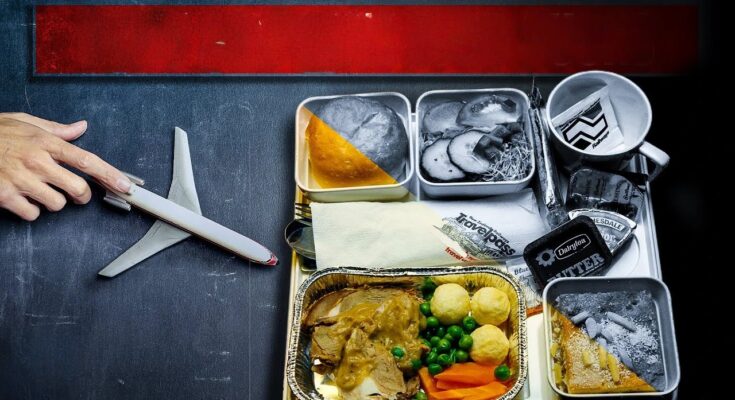Ever Wonder Why Everything Tastes So… Meh at 35,000 Feet?
You’re finally served your in-flight meal. It looks decent. Maybe even smells okay.
You take a bite and—blah.
Dry chicken, flavorless rice, rubbery veggies.
Before you blame the airline or the chef, here’s a surprising truth:
It’s not the food that changes in the sky…
It’s you.
Let’s unravel the real science behind why airplane food tastes bland — and how your own body plays a huge role.
Your Taste Buds Go Numb in the Sky
One of the biggest reasons in-flight meals fall flat has nothing to do with ingredients — and everything to do with how flying affects your senses.
| What Changes in the Air | How It Affects You |
|---|---|
| 🔼 Low cabin humidity | Dries out your nose and mouth, dulling taste and smell. |
| 🛫 High altitude (pressure changes) | Reduces the sensitivity of taste buds by up to 30%! |
| 🔇 Engine noise & vibration | Surprisingly, loud ambient noise can suppress sweetness perception. |
| 💨 Recycled dry air | Makes your sense of smell less effective — a huge part of flavor. |
The Science of Sky Flavor
Studies show that at cruising altitude, your ability to taste salt and sugar drops significantly.
In fact, foods taste as if you have a mild cold — everything becomes muted.
That’s why airlines often over-season their meals on purpose, using more salt, spice, or umami-rich ingredients like tomatoes and mushrooms to help compensate.
Even then, it may not be enough to wake up your airborne taste buds.
So… What Can Airlines Do?
Believe it or not, some airlines take this seriously and work with food scientists and chefs to create “sky meals” that are designed specifically for in-flight consumption.
| Airline Innovation | What They’re Doing |
|---|---|
| ✈️ Lufthansa & Singapore Airlines | Use altitude simulation kitchens to test recipes. |
| 🍜 Emirates | Add strong spices and rich sauces to increase flavor perception. |
| 🍷 Air France | Curate wine and cheese based on how they taste mid-flight. |
Want to Make Airplane Food Taste Better?

Here are a few simple tricks you can try:
-
Hydrate before and during the flight to keep your taste buds alive.
-
Avoid alcohol and caffeine — they dry you out even more.
-
Bring your own snacks with bold, sharp flavors like wasabi peas, sour gummies, or spicy trail mix.
-
Eat lighter meals to avoid bloating and digestion issues at high altitudes.
Final Bite: It’s Not the Meal — It’s the Miles
So the next time you’re chewing on something flavorless 35,000 feet in the air, remember:
It’s not your chef that’s bland — it’s your body that’s confused.
Your senses simply don’t work the same way up there.
Airplane food isn’t doomed… it just needs to outsmart altitude.




